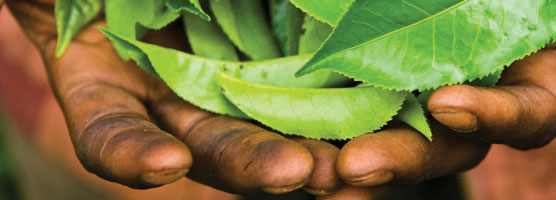Issues

The total land area of Bumbuli constituency is estimated at almost 54,000 hectares, which represents just 14% of Lushoto District’s total land area. At over 39,000 hectares, agricultural land accounts for 73% of Bumbuli’s land area, but this is just 16% of Lushoto’s agricultural land of 240,000 hectares. Forestry takes up 16% of Bumbuli’s area with 8,805 hectares, and the remaining 5,748 hectares (11%) is taken up by water, roads, buildings and other areas unsuitable for use.
There are two agro-ecological zones in Bumbuli – the humid warm and the dry warm zones. The humid warm zone is generally found in areas around Bumbuli and Soni divisions, its area elevated at an altitude of between 800-1500 meters above sea level. These areas receive about 800-1700mm of rainfall and have long rains between March and June.
The zone experiences an annual mean temperature of about 18 centigrade. More than half of the households produce fruits, maize and vegetables in this zone. Tea is grown only in the Bumbuli constituency of Lushoto district by as many households as grow bananas and beans. Cassava and coffee are also grown, but by a smaller proportion of households. The major types of farming practice are contour farming, which is used by 90% of households and monoculture that is used by almost 80% of households.
The dry warm zone covers Mgwashi division and lies at an altitude between 800-1800 meters above sea level. The area receives low amount of rainfall that ranges between 500-800 mm and its mean temperature is 20 centigrade. The area experiences four months of dry period and northeast trade winds, which causes short rains between October to December. Fewer crops are grown in Bumbuli’s dry warm zone. Well over half of the households grow maize, beans and cassava. Less than 30% grow vegetables, potatoes and bananas. Most households (87%) practice bottom valley farming and fewer use crop rotation (44%) and monoculture (33%) methods.
Bumbuli’s soil is of the type known as humi-umbric acrisols. The soils are described by Food and Agriculture Organisation (FAO) as having ‘low natural fertility, with aluminium toxicity and strong phosphate fixation.’ Therefore, contrary to expectations, the lush vegetation in Bumbuli is not a sign of inherent soil fertility. The soil is fragile and requires substantial care in the form of fertilisation and conservation if it is to be productive.
Copyright © 2010 - January Makamba - All rights reserved. Conforms to W3C Standard XHTML & CSS
